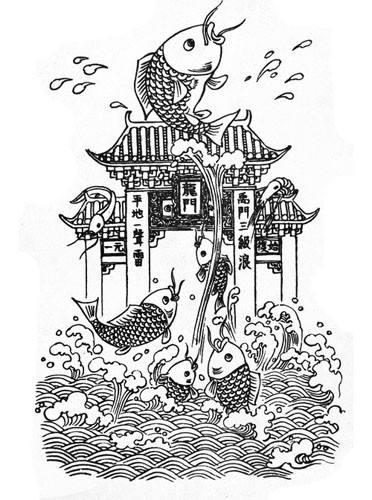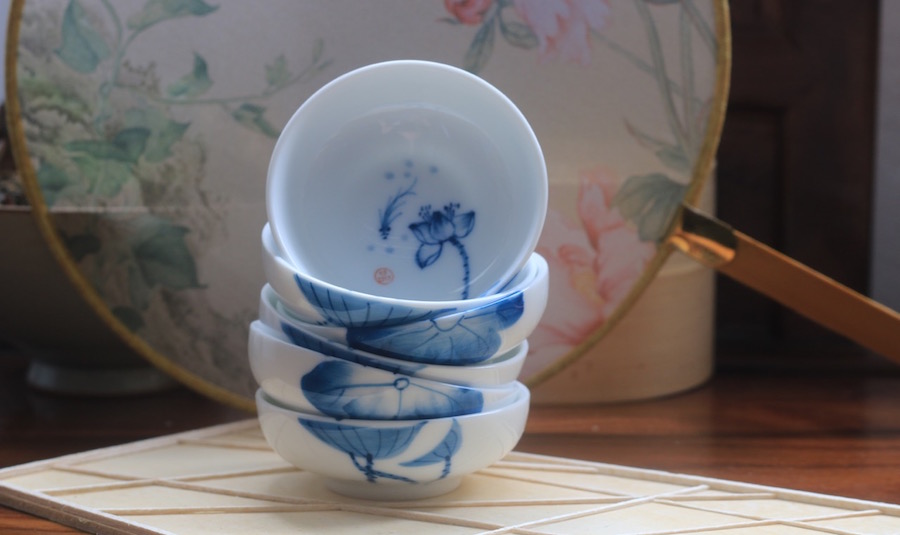Among the Chinese charms, the koi fishes and gold fishes are among the most often used Chinese lucky symbols. A koi fish is a type of carp that’s often kept for decorative purposes in outdoor ponds. The same hold for gold fishes.
These fishes represent prosperity and happiness. Not strange given that China has a long history of fishing, fish farming and fish keeping. During the Song dynasty (960-1279AD) several gold fish colour variations where successfully developed through selective breeding.
The decorative carbs are often known as koi carb, which were first developed and selective bred in Japan during the 19th century. However, other carb types were bred much earlier in China and appeared as prosperity symbols in poems and inscriptions. Today, the term ‘koi fish’ is used as a general term for any decorative carb worldwide.
Let’s take a look of 7 ways fishes appear in Chinese culture.
1. Fish Symbols on Ancient Inscriptions
Fish symbols were discovered on inscriptions on oracle bones and turtle shells from the Yin ruins (13th - 11th century BC). The inscriptions depict that fishes had been used to cure stomach diseases.
2. Chinese Poems about Fishes
In the earliest collection of Chinese poems in "The Book of Songs" (11th - 6th century BC), more than 20 types of fish were mentioned. For example, in “Song of the Guest at Country Feasts”, there's this following sentence: “Baskets lined up with the finest fish, including carp and ray.”
3. Selective Carb Breeding
Carps were first bred for color mutations in China more than a thousand years ago. Fish keeping started to get popular from Ming Dynasty (14th century). People kept ornamental varieties like koi and goldfish in the fish tanks in their study, or in the ponds of water gardens.
4. Fishes in Chengyu (Chinese Idioms)
One of the most popular Chinese idioms during Chinese New Year is 年年有余 ( nián nián yǒu yú), which means ‘May you have abundance and surplus year after year’. Because the Chinese word for fish 鱼 (yú) sounds exactly the same as the word 余 (yú), meaning ‘abundance’ and ‘surplus’. This also makes fish a must-have dish during Chinese New Year. People don’t finish the whole fish but leave the leftovers for the first day of the New Year, which symbolizes that the abundance and surplus will last year after year.
Below two other examples of Chengyu:
- 如鱼得水 (rú yú dé shuǐ ): literally translated as ‘Like a fish in water’, it used to describe someone who performs well in certain environment.
- 浑水摸鱼 (hún shuǐ mō yú) : fish in muddy waters, meaning ‘take advantage in troubled situations.
5. Fish in Myths: Koi Fish Transforming into a Dragon
Have you heard of the myth of carps leaping through Dragon’s Gate and transforming into dragons? Legend has it that long time ago, every year during the springtime, schools of fish would go against the current in the Yellow River and try to leap from the bottom to the top of a waterfall called Dragon’s Gate. As the current was so strong and the waterfall was so high, many fish decided to just go with the flow. Only a few of them kept trying over and over again. Finally, they succeeded and transformed into heavenly dragons.
This fish legend is so well-known in China that people use it as a proverb: 鲤鱼跳龙门 (lǐ yú tiào lóng mén). It used to mean succeeding in the civil service examination in old times. In today's context, this proverb means to overcome adversity and make a success in life.
Due to the popularity of this myth, it's also often used theme in koi fish tattoo designs.
6. Fishes in Chinese proverbs
There are many other proverbs in China that relate to fish. Here's one well known example:
授人以鱼, 不如授人以渔 (shòu rén yǐ yú, bù rú shòu rén yǐ yú)
The above proverb means:
‘Give a man a fish and you feed him for a day, teach a man to fish and you feed him for a lifetime.’
7. Fish Symbols in Paintings & Teaware
Fish, especially koi fish, with the symbolism of good fortune, prosperity and success, has always been a common object in Chinese art such as Chinese traditional paintings and Spring Festival pictures. You also often see fish art on Chinese ceramics such as teapots, cups, tea pets, jars and plates.
